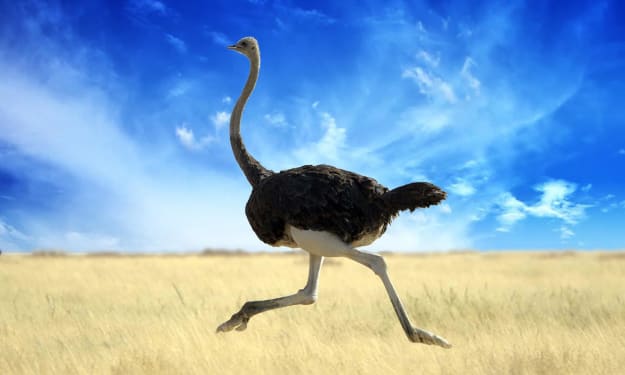
An illustrious night had finally come to the moment everyone had been waiting for, the clock strikes midnight, it’s here, the almost unimaginable, year 2100. Waves and waves of people celebrate, streets filled with flashes of light bellowing from incredible firework displays, with children and pets alike in awe. But the big question is on many minds, what will the new century bring? Prosperity? Happiness? Or will the following decades become a shadow of what could have been.
It has been over 100 years since the internet came into the world, since our planet discovered, understood and then began to fight back against climate change. We have come so far, but what has changed? We were warned that to keep earth sufficiently habitable, we must do anything possible to keep rising temperatures to a minimum, to ensure we would not leave a world riddled with extinction, inhospitable lands, and rising sea levels. The date is 01/01/2100, and we have failed these targets.
We were told we had to keep our yearly average temperature rise to below 1.5 °C, this was the absolute maximum rise. Instead, we went over this target, merely a decade after it was set. But it continued to rise, and rise, and rise. Any hope of averting the damage we were predicted to bring upon our home, was all but over. Every year continues to break the previous heat records, along with wildfire records, snow falling records, freezing temperature records, thousands of species going extinct annually, but we are still here – just.
Movies had given us glimpses of apocalyptic events, scenarios not quite true or possible, but ones that opened our eyes to see what could happen should nothing change. Now, in the year 2100, we are living it. Not to the extent of those movies, however, but iconic lands like San Diego and Los Angeles are nothing more than a memory, the Netherlands reduced to a smudge on a map of Europe. Countries are now clambering to talk to each other, constantly updating weather agencies on incoming tsunamis, incredible storms, heat waves, spreading wildfires - everything.
The days of predictable seasons are over, no longer are we running to the beach to get tanned, jetting off in the winter to ski. Instead? We have hail storms with plummeting temperatures in the middle of June, we have 30°C heatwaves in November, and unbearable UV levels. This is not just grab SPF50 heat, it is drop dead heat. Our neighbours in Spain are not alone now, as the majority of the inhabited world has been forced to adapt to staying indoors during the peak heat hours of the day. Unlike a century before, our winters have now turned into spring, with temperatures rarely dropping below 15°C.

Attention now turns to the animals of the world, more so what has survived the extremity in changing weather and seasons. Lions and tigers are now just pictures, with many generations never having laid eyes on them. Insects are now just 5% of the total numbers they had pre-2000, crushing forests and woodland all over Europe.
The most famous to follow the deadly path to extinction were gorillas, rhinos, sea turtles, whale species, families of pigeons, koalas, polar bears, and cheetahs. Of course, thousands more have also perished, becoming nothing more than a footnote in our history books.
Patches of the Amazon rainforest remain, becoming an example of the only places on land where 'wildlife' can continue, at least for the time being. It is a glim vision, a world with less and less variety, less diversity. In a way, Darwin's theory of Natural Selection has been proven in the animal kingdom, but disproven for humans, as health and science advancements now mean age is the number one killer.
All efforts to preserve marine life has ended in earnest, with the countless endeavours to create new reefs, being overrun with human pollution, mostly in the form of microplastics, eventually making it impossible for life underwater to breathe. The only safe havens under the waves are in the deep depths of the ocean, places like the Mariana Trench, where we still can't conquer.
Flying across the Atlantic comes with incredible sights, as the big blue waves below are scattered with incredibly large island looking structures - upon closer focus, they are large build ups of garbage. Garbage so large it is visible this high up - did we really let this happen? Were there no other options? Or did we ever think humans could have such an impact, since so many of us feel so small.
Looking back to the pictures taken in the Alps during the winters of the 2010's seems so distant, since snow hasn't fallen there for decades now. Such harsh lands that, during winter, held back the Romans, the Nazis, the Mongols - is nothing but a beautiful hike all year round, or golf.
The North Pole has also joined the Alps now, seeing less and less snow year on year, this coming winter, it is yet again predicted to be particularly small - some are saying this could be the last time we can say 'North Pole.'
Did we really do all we could? Did governments and large corporations, big conglomerates, tech giants, supermarkets, manufacturers, retailers, charities, communities - everyone - do what they could? Did anyone really, truly, grasp the reality of what may happen to this big green planet, and if so, how many acted? How many chose to do something positive, do something that would allow nature to continue in some small way...
Even now, there is no right time to act, the only question anyone should ask is, why not sooner?






Comments
There are no comments for this story
Be the first to respond and start the conversation.